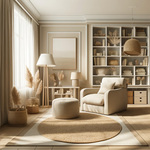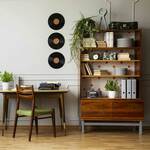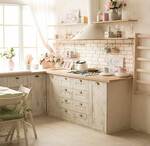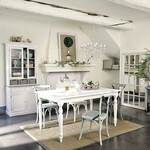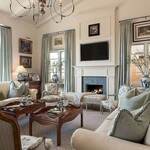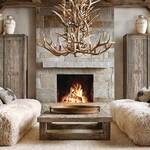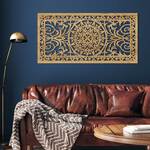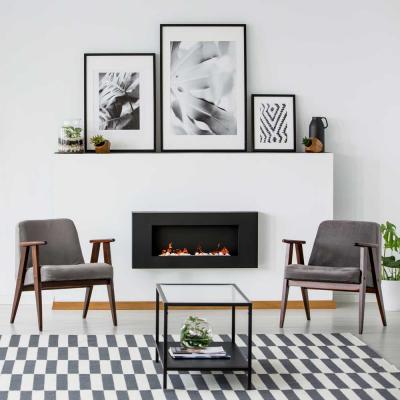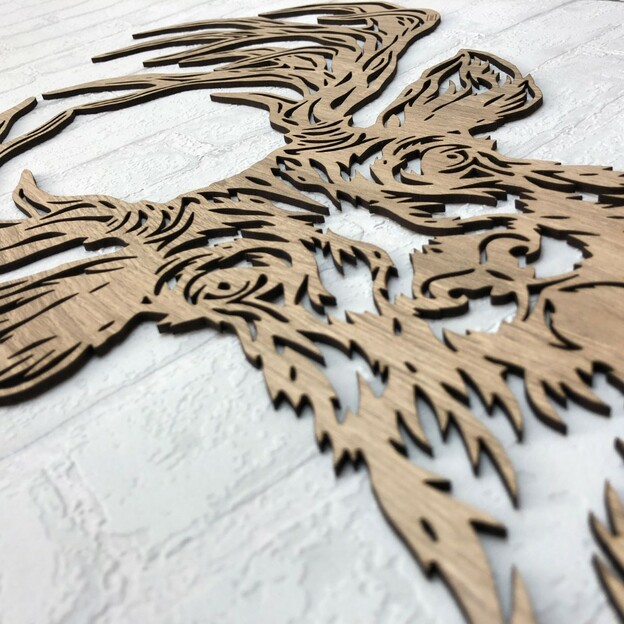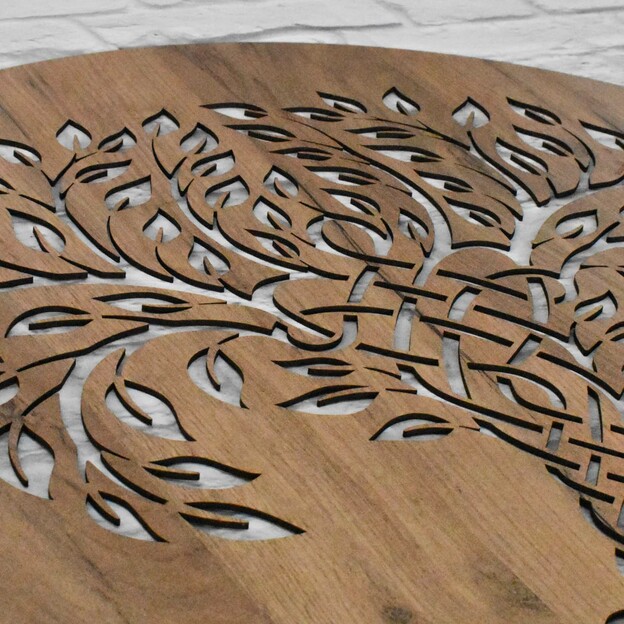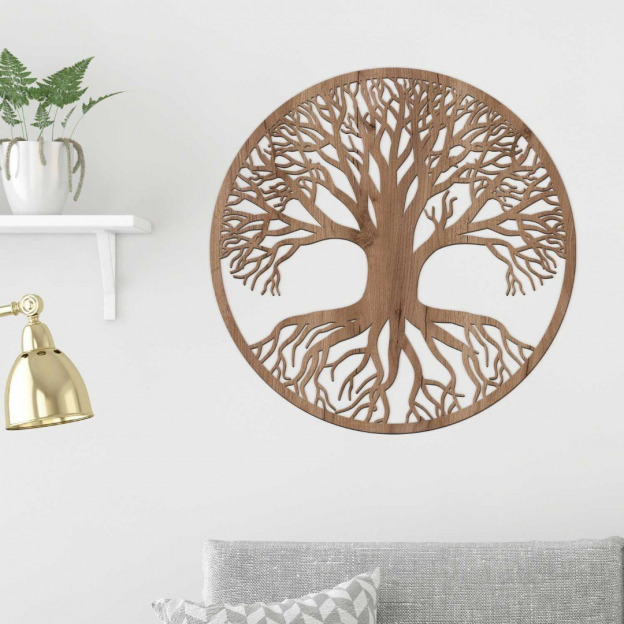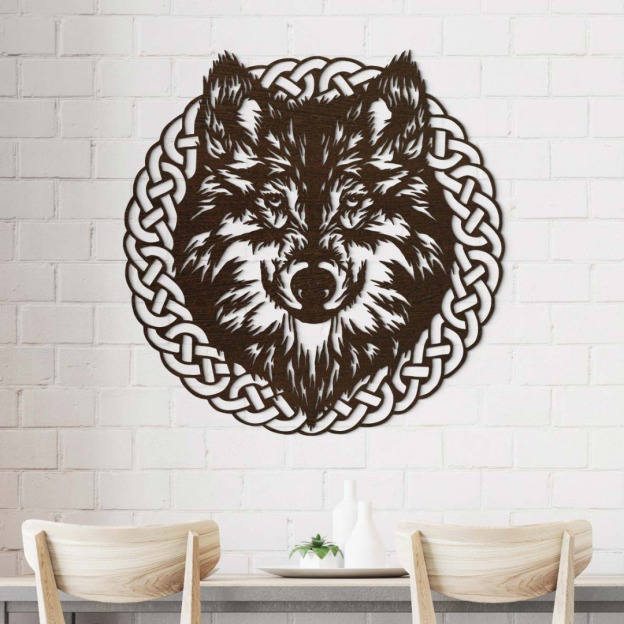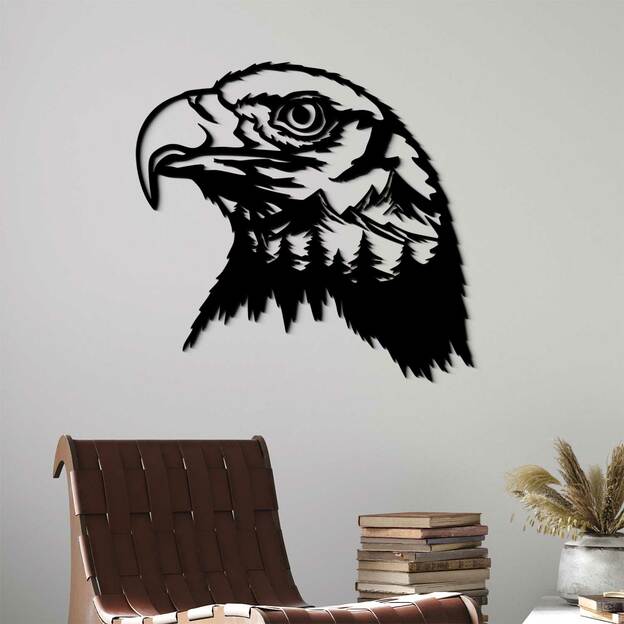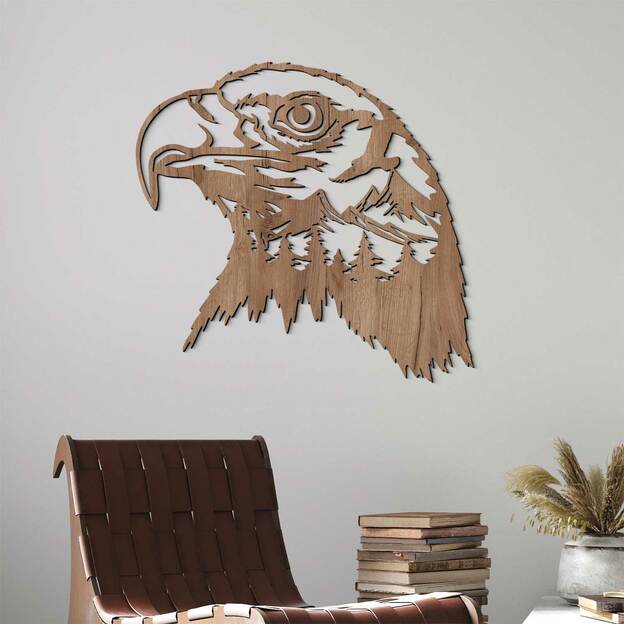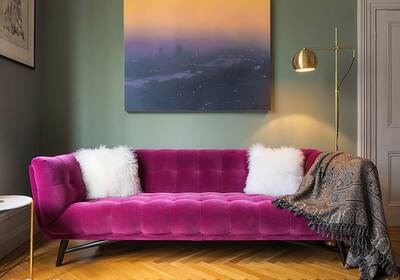
Rustic Living Style – A Return to Nature
The rustic style is best characterized by a return to nature, history, wood, and authenticity. In many ways, it’s the opposite of the industrial style, which seeks to merge industry with living spaces. You don’t need to buy a log cabin in the mountains or move into a castle to create a home in this style. Simply incorporate specific elements and materials to achieve the rustic look in your own home.
What are the main characteristics of this style? Heavy, solid wood, often only lightly processed; iron elements, leather, and stone. The rustic style is a broad term, literally translating to “a return to the countryside.” It shares features with the country style, but there are many distinctive elements. This article will take an in-depth look at its history, key characteristics, origins, and suitability.
What you will learn in this article:
- Origins, history, and background of the rustic style
- Key elements of rustic style
- Rustic-style home accessories
- Decorating individual rooms in rustic style
- A brief summary
- Who is rustic style for?
1. Origins, History, and Background of the Rustic Style
The rustic style of living emerged in 19th-century America during the colonization and settlement of remote areas. People building homes far from civilization had no furniture or accessories to furnish their spaces. Cars did not exist, so families typically relied on horse-drawn carriages at best—or just horses at worst. The materials they used came from their surroundings: primarily stone, wood, and sometimes leather. Homes and decorations were created using natural materials and basic tools that settlers brought with them.
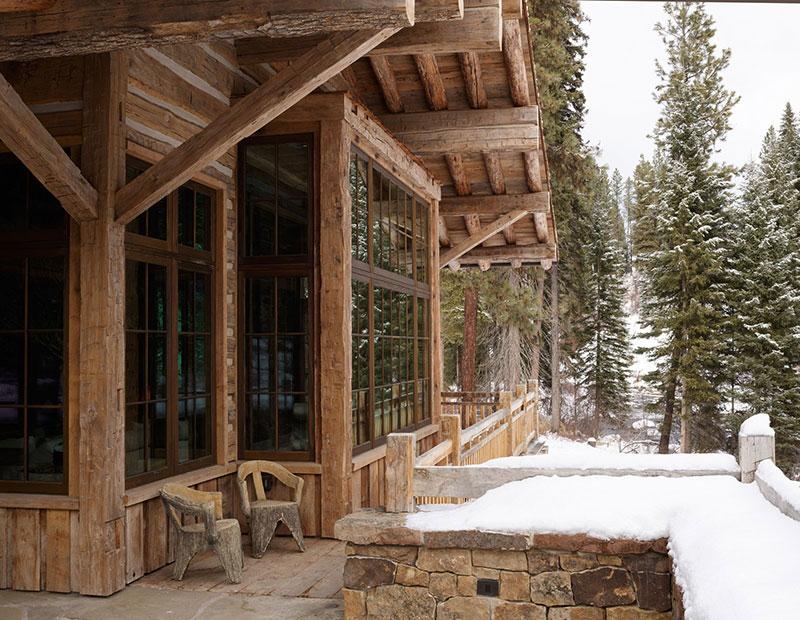
Source: pufikhomes.com
2. Key Elements of Rustic Style
Like any interior design style, rustic design has its own distinctive features. Let’s take a closer look at them:
- In Harmony with Nature – A return to nature is achieved through the use of natural materials—wood and stone. Not just any wood, but primarily solid, raw, and unprocessed wood. Wooden planks on walls, wooden floors, wooden furniture, and more. The raw, untreated surface highlights nature’s beauty over human craftsmanship. While other styles, like country or French styles, also have roots in nature, they don’t possess the same grandeur as rustic design.
- Exposed Wooden Ceiling Beams – A staple of rustic design. Since the beams commonly used here are from coniferous trees, they can be stained darker to better fit the rustic color palette. Historically, without industrial saws, beams were uneven, rough, and impressively solid.

Source: pufikhomes.com
- Modern Materials Are Hard to Find – Modern materials, such as synthetics, textiles, or sleek metal objects, don’t generally belong in rustic interiors. While they can occasionally be incorporated as a compromise, eliminating these materials enhances the rustic effect. For instance, white plaster walls paired with wooden beams are a good compromise. If clay plaster is used, it further emphasizes the rustic theme.
- Modern Furniture Doesn’t Fit – Similar to modern materials, contemporary furniture and accessories have no place in rustic interiors. Rustic style respects history, and furniture must adhere to architectural principles of the era.
- Handcrafted Furniture – Rustic furniture is typically handcrafted, featuring simple designs, solid wood, and sometimes stone elements like countertops. Despite its bulk and weight, the furniture aims to feel cozy and inviting, embodying the warmth of rustic style.
- Nature-Inspired Colors – Unsurprisingly, rustic interiors are characterized by earthy tones found in nature: greens, browns, and grays in muted shades.
- Imperfect Design – Rustic style embraces imperfection. Straight, precise lines are not typical. Each piece carries natural variations, making it unique.

Source: pufikhomes.com
- The Fireplace as the Centerpiece – A large, sturdy fireplace is a hallmark of rustic interiors, traditionally serving as both a heat source and a family gathering point. Today, it remains an essential element, blending functionality with aesthetic appeal.
- Leather and Jute Take Priority Over Textiles – Natural materials like animal hides, leather, and jute are commonly used for rugs and upholstery. These elements provide warmth and authenticity.
- Antlers and Animal Elements – Large antlers, ideally displayed above a fireplace, add a bold rustic statement.
At DUBLEZ, we combine the requirements of modern living with rustic charm. Explore our rustic-style decorations featuring wildlife motifs:
- Chandelier as a Room’s Highlight – A rustic chandelier is typically metal or a combination of metal and wood, maintaining its historic inspiration while being fully electric.
- Matte Finishes – Rustic materials are naturally matte. Wood and stone surfaces should retain their natural appearance without additional polishing or gloss.
- Rustic Doors – Made of wooden planks, rustic doors can be traditional hinged or modern sliding, fitting seamlessly into the style.

Source: homedit.com
3. Rustic-Style Home Accessories
Rustic interiors call for fewer, but bold and prominent accessories:
- Ceramics – Unglazed pottery in neutral tones enhances the rustic aesthetic.
- Vases with Flowers – A simple ceramic vase with flowers or branches from the forest adds charm.
- Wooden Frames for Pictures or Mirrors – Frames are robust and irregularly shaped, highlighting the material's natural qualities.
- Clocks – Naturally, rustic clocks are wooden. Simplicity is key, with minimal design and just hands—numbers aren’t even necessary. Solid, round clocks made from wood slices are particularly appealing in this style.
- Books – Especially old books, which add charm and uniqueness to the interior. Historic, vintage books with original bindings are a perfect fit. Place them on a simple wooden shelf made from planks.
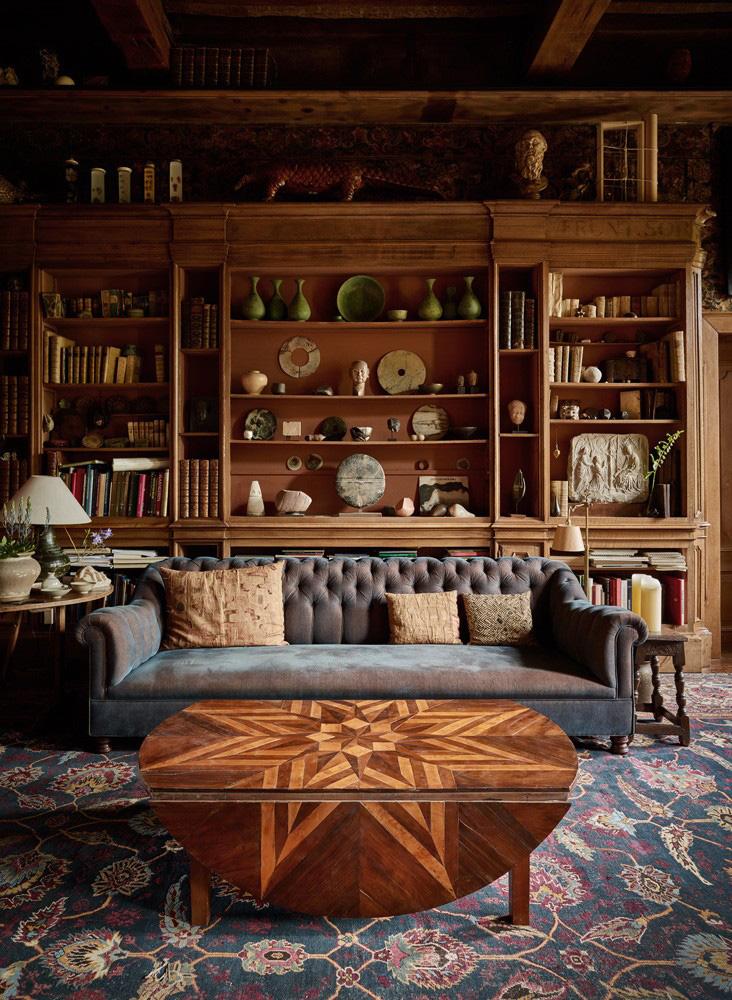
Source: pufikhomes.com
- Cushions – Faux fur cushions are a must for adding warmth and coziness. Faux fur is a classic natural material associated with warmth. While modern textile cushions are an option, their designs should align with the rustic color palette.
4. Decorating Individual Rooms in Rustic Style
Thinking about furnishing just one room in rustic style? If you're unsure about the approach, materials, furniture, or accessories, this section is here to help. Let’s dive in!
4.1 Living Room in Rustic Style
A rustic living room should feel spacious, as it’s the main room of the house. Avoid sectional sofas in "U" or "L" shapes; if used, they’re often separated into smaller pieces. Instead, opt for a classic setup—one straight sofa and two armchairs. Sofas can be leather or textile, ideally draped with a faux fur throw.
The focal point of the room is a massive stone fireplace. Don’t worry if you don’t have one—it’s not essential. Complement the room with a hanging chandelier made of matte black metal chains. For rugs, choose jute or faux fur rugs for added warmth and texture.

Source: pufikhomes.com
Gallery of Rustic Living Rooms:
4.2 Kitchen in Rustic Style
A rustic kitchen combines solid wooden cabinets and stone countertops. Sinks should also be stone. The dining area is anchored by a large, solid wooden table. Chairs can have gentler designs, preferably with leather upholstery. Table mats made from seagrass, hay, or jute are an excellent addition. Display ceramic pitchers, clay jars, and wooden cutting boards instead of hiding them in cabinets.
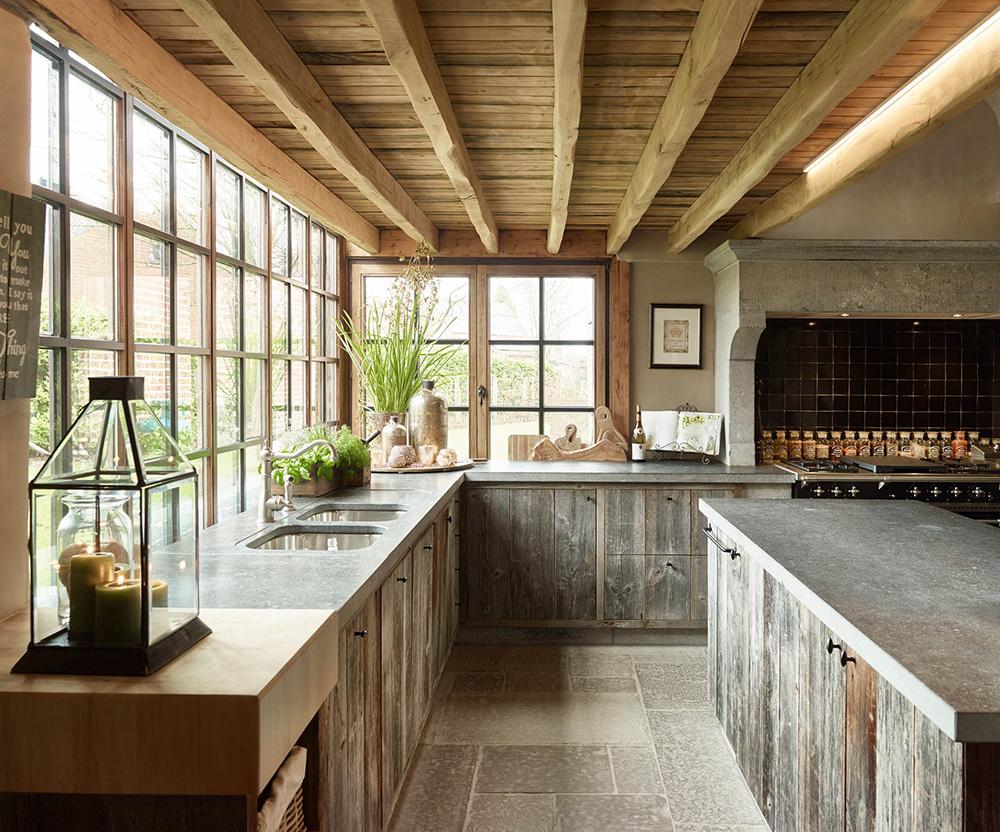
Source: pufikhomes.com
Gallery of Rustic Kitchens and Dining Rooms:
4.3 Bedroom in Rustic Style
A rustic bedroom is defined by a large bed with equally large cushions. A wooden chest or trunk for storage can be placed at the foot of the bed. For more wardrobe space, consider a solid wood wardrobe. Curtains should be light in color but made of heavy fabric to ensure darkness when closed. Place faux fur rugs on either side of the bed for added warmth on chilly mornings.

Source: pufikhomes.com
Gallery of Rustic Bedrooms:
4.4 Bathroom in Rustic Style
Rustic bathrooms are centered around stone, the main material. Avoid glazed tiles. Use stone for flooring, walls, sinks, and even bathtubs. If ceramic tiles are chosen, go for matte, natural surfaces in earthy tones. Faucets and other metal elements should have matte finishes in copper or brass. Mirrors, though not typical of rustic style, can be included if they are simple and frameless to maintain the aesthetic.
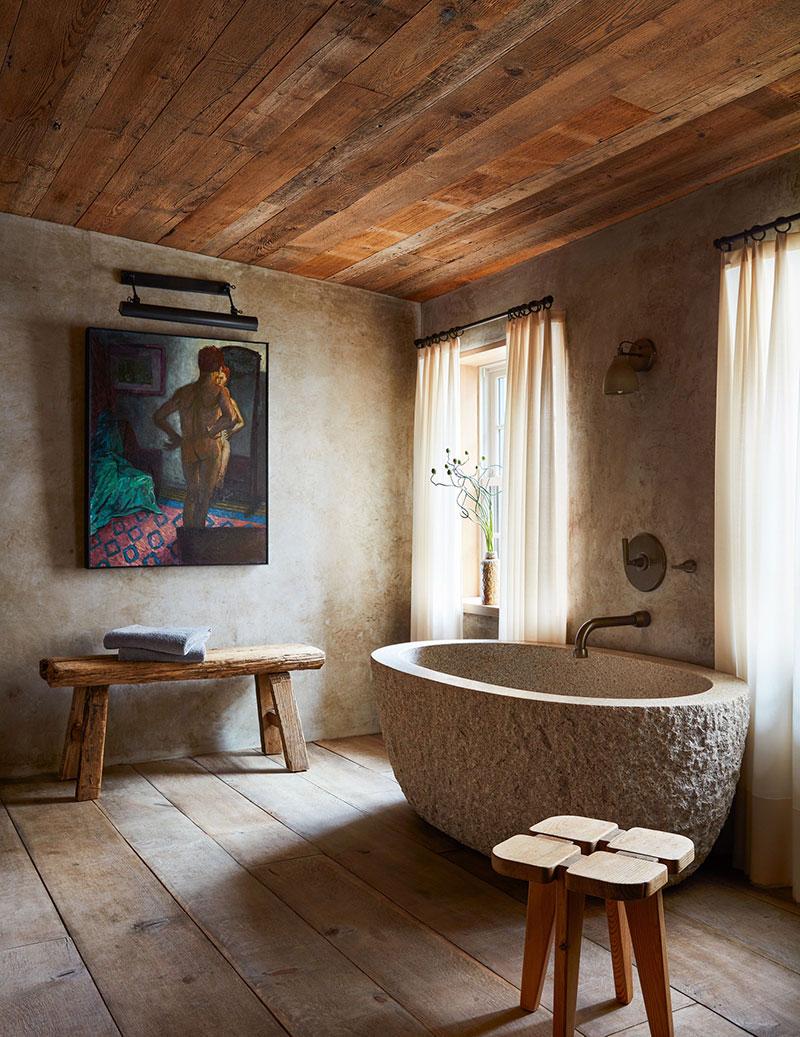
Source: pufikhomes.com
Gallery of Rustic Bathrooms:
5. Brief Summary
To summarize the rustic style, here are the key characteristics:
- Wood – Beams, floors, furniture, accessories—anything made from wood.
- Stone – Primarily fireplaces, furniture tops, wall cladding, tiles, and sinks.
- Leather – Found on sofas or as animal hides on the floor as a rug substitute.
- Oversized Furniture – Few accessories, minimalism, and simplicity are balanced by robust and oversized elements.
- Massiveness – Large beams, furniture, solid wood doors, and a massive fireplace. Everything has a sturdy, substantial appearance.
- Roughness – This applies to surfaces. Handcrafted stone and wood are left untreated, adhering to matte finishes.
- Handcrafted Design – While not always possible in modern times, rustic-style products often emulate the handmade look.
- Naturalness – Avoid excessive surface treatments, and embrace natural colors.
- Simplicity – Rooms are not cluttered with furniture or accessories, leaving them spacious, clean, and airy.
6. Who Is Rustic Style For?
The rustic living style is ideal for anyone who appreciates a return to nature, natural colors, materials, and simplicity. It is particularly suited for houses rather than apartments. However, this is not a strict rule, as creativity knows no bounds. Spaces furnished in a rustic style have a cozy and inviting atmosphere, feel open and airy, and exude warmth from the wood while conveying the strength and raw beauty of untouched nature.
All DUBLEZ products in rustic style can be viewed HERE.
To conclude, here’s a video featuring 60 photographs of various rustic-style living rooms:
Sources:
- https://www.housebeautiful.com/design-inspiration/a23937828/rustic-design-style/
- https://www.elledecor.com/design-decorate/room-ideas/g10262395/rustic-decor/
- https://www.thespruce.com/what-is-rustic-design-4771798
- https://vevano.com/resource-center/home-interior-styles-rustic-design/
- https://www.livingspaces.com/inspiration/ideas-advice/styles/what-is-rustic-style
- https://www.homedit.com/elements-of-rustic-decor/
- https://www.idesign.wiki/rustic-style/
- https://www.housebeautiful.com/design-inspiration/a23937828/rustic-design-style/










































